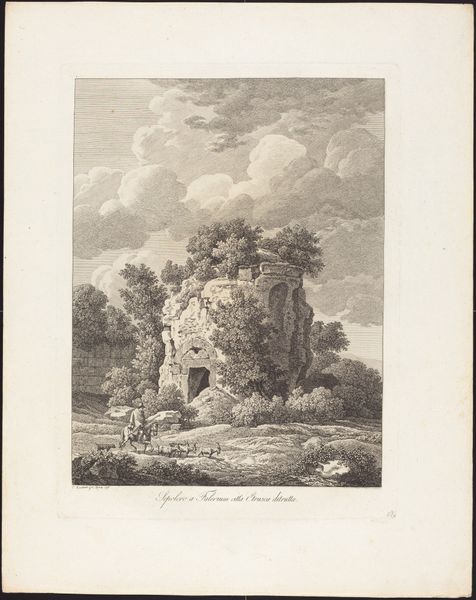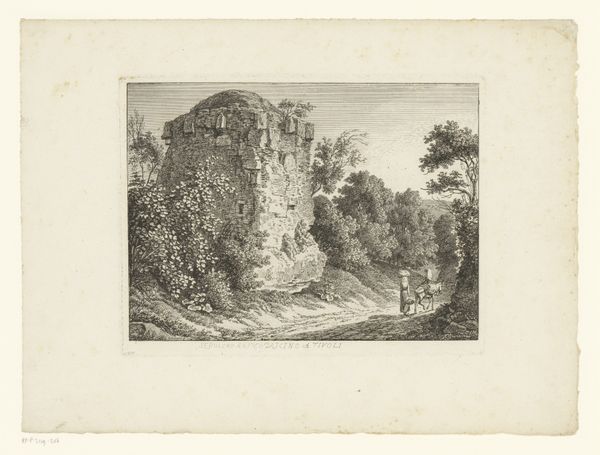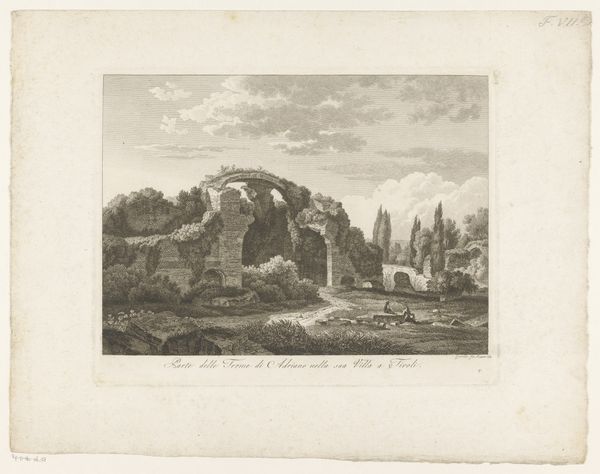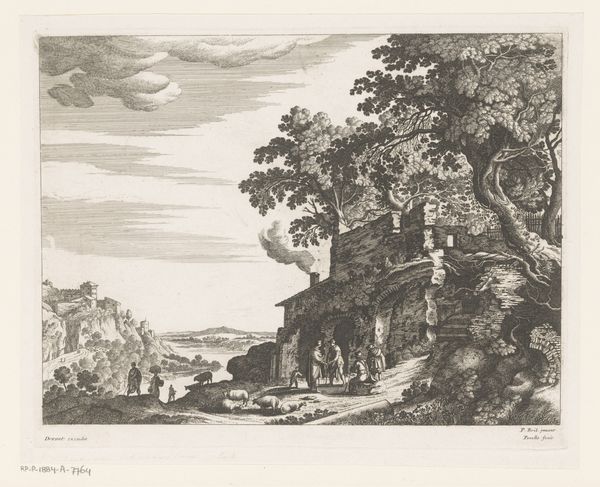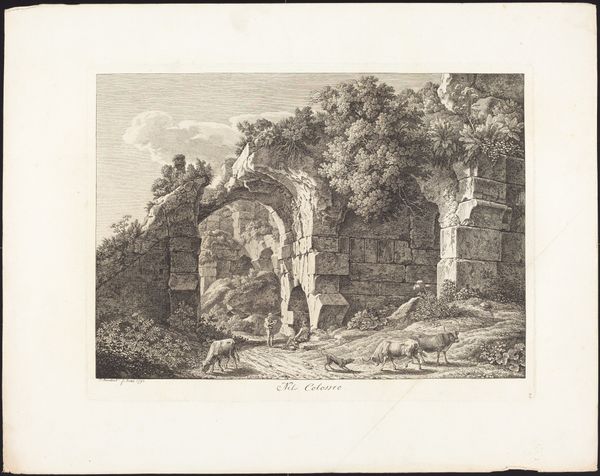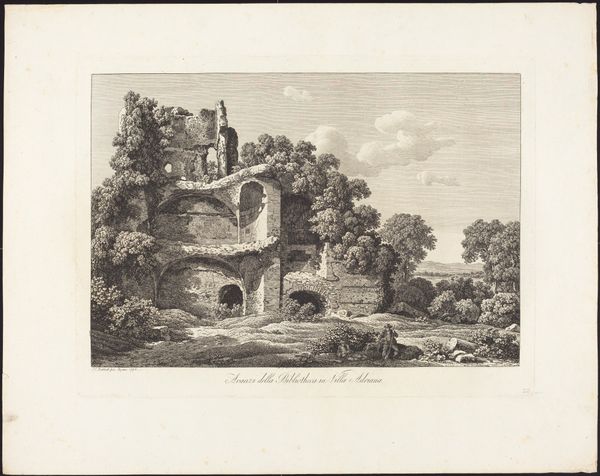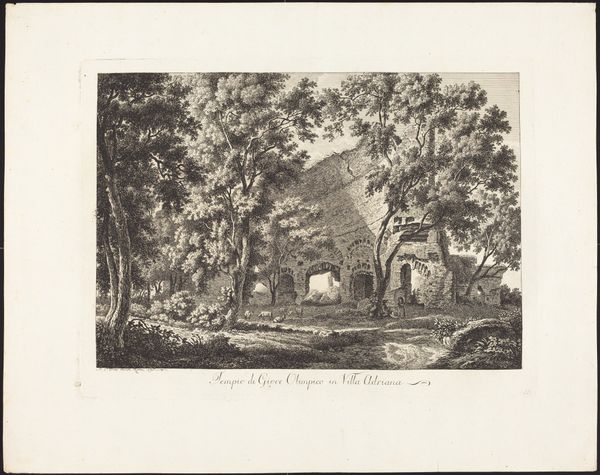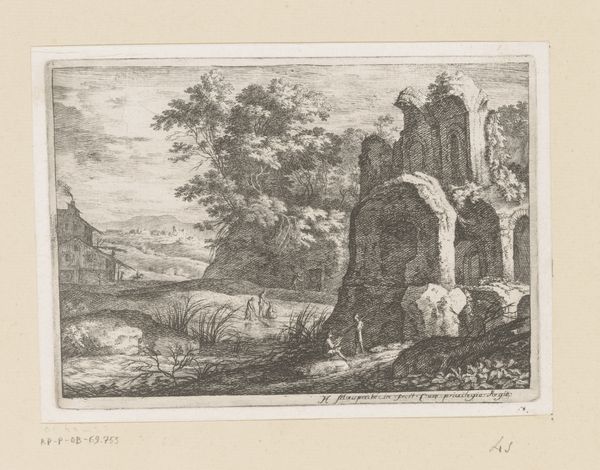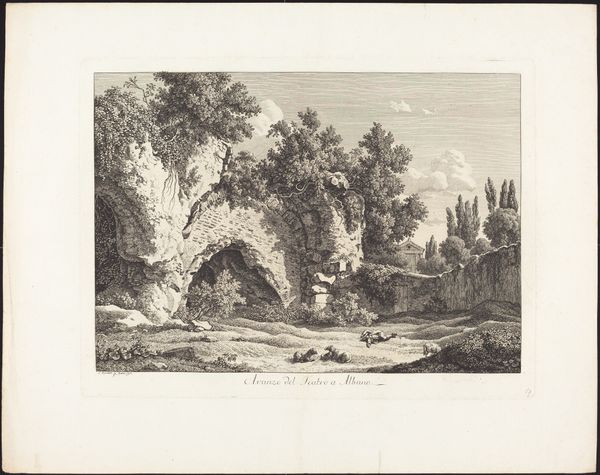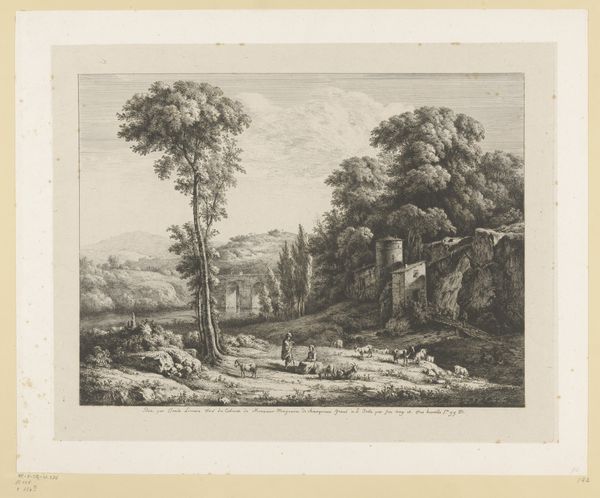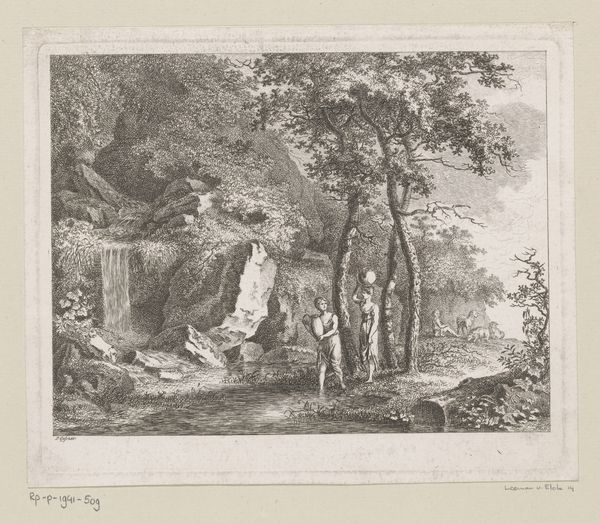
print, engraving, architecture
#
neoclacissism
# print
#
landscape
#
italian-renaissance
#
engraving
#
architecture
Dimensions: plate: 28.2 x 37.5 cm (11 1/8 x 14 3/4 in.) sheet: 39.2 x 49.2 cm (15 7/16 x 19 3/8 in.)
Copyright: National Gallery of Art: CC0 1.0
Curator: Today, we are looking at Johann Christian Reinhart's 1793 engraving, "Rovine della villa di Ventidio Basso a Tivoli," which translates to "Ruins of the Villa of Ventidius Bassus at Tivoli." It's a fascinating example of Neoclassical landscape art. Editor: It’s so evocative, a world crumbling gently into nature. There's a real feeling of decay meeting rebirth. How do we reconcile these seemingly oppositional visual messages? Curator: I think it resides in the composition. Note how Reinhart meticulously balances the strong vertical lines of the ruined villa against the horizontal sweep of the landscape. The dark, deeply etched lines create a sense of gravitas, emphasizing the permanence, yet simultaneously fragility, of classical architecture. It invites reflection on the passage of time, the rise and fall. Editor: Precisely, it’s important that we acknowledge how class impacts who has their legacies preserved versus forgotten through time. These romantic ruins are often beautiful reminders of past inequality. Look closely at the depiction of the two common folk driving livestock at the lower register of the landscape – the commoners stand in stark juxtaposition to the legacy of this site; yet also a powerful symbolism for whose hands reclaim nature – whose labor brings growth to the pastoral scene once again. Curator: An insightful point. And certainly, there is commentary implicit in landscape artwork of this era. It is not just the pretty landscape painting one might initially assume it is. I also find the interplay of light and shadow significant. Reinhart masterfully uses it to direct our gaze, leading us through the different parts of the landscape. The careful articulation of textures too -- the rough stone versus the soft foliage -- highlights the dichotomy between the constructed and the natural. Editor: This is exactly why considering the historical lens is crucial. While you can appreciate the line quality or composition in this black-and-white print as it emphasizes those formal elements, but if we just focus on that, we lose all the potential power to acknowledge social justice matters or explore difficult subjects like power and colonialism through art! We mustn't sanitize our interpretations in deference to beauty standards alone! Curator: Agreed; beauty need not blind us to truth, rather it may help us better communicate difficult subjects. It is through engaging these tensions that we can develop our cultural understanding. Editor: So next time, maybe look beyond first impressions – consider the layers beneath, think about its effect today within our times… What this print shows us of 18th Century is a reflection for the now!
Comments
No comments
Be the first to comment and join the conversation on the ultimate creative platform.
